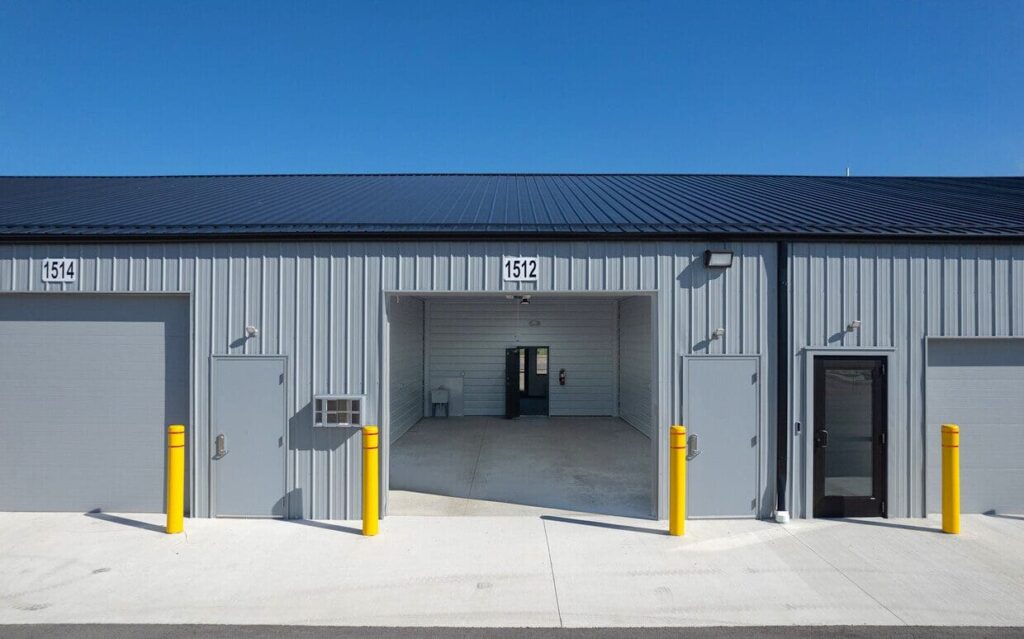Managing seasonal inventory can be a major challenge for many businesses as inventory fluctuates. As consumer demand changes throughout the year, companies must efficiently store excess stock to protect merchandise quality and availability and effectively manage seasonal inventory. Proper storage solutions are key to optimizing space, maintaining organization, reducing expenses, and ensuring inventory is accessible when needed. We will explore the best practices for efficient seasonal business storage.
What is Seasonal Inventory?
Seasonal inventory refers to the additional stock that businesses maintain to accommodate surges in customer demand during specific times of the year, such as holidays or seasonal events. Instead of keeping high inventory levels throughout the year, companies strategically increase their stock during peak seasons to manage fluctuations in sales. This can include items like holiday decorations, seasonal clothing, and gardening supplies.
Common retail seasonal inventory buildups center around public holiday seasons such as Christmas, Valentine’s Day, and Halloween. Clothing merchants also rotate offerings to align with winter, spring, summer, and fall seasonal trends. Some businesses, like garden supply firms, deal with seasonal inventory based on growing cycles and harvest calendars. Others in hospitality and tourism predictably ramp up based on vacation seasons associated with schools or optimal weather conditions.
Regardless of the exact driver, seasonal inventory requires purposeful planning to align stock availability to windows of heightened consumer interest and fluctuating season demands. Proactively taking steps to improve seasonal inventory management enables companies to maximize revenues during these lucrative periods.
Why Efficient Storage Matters
For any business dealing with seasonal inventory spikes, properly accommodating higher volumes of merchandise is imperative yet challenging. Without sufficient processes and infrastructure in place, critical issues emerge, compromising product quality, operations, expenses, and revenues. Optimizing seasonal inventory storage alleviates these pitfalls to avoid preventable losses.
Key reasons to optimize seasonal inventory storage include:
Protecting against product damage or spoilage
- Fluctuating climate levels risk merchandise integrity
- Excess handling causes wear and tear
- Lack of access controls enables theft
Maximizing usage of storage capacity
- Failing to utilize vertical and horizontal space fully requires unnecessary expansion
- Tailoring storage layouts and structures to inventory dimensions optimizes density
Maintaining inventory organization and visibility
- Chaotic piles of inventory disguise shrinkage
- Distorted stock counts impact ordering and fulfillment
- Absence of location tracking stalls order processing
Reducing overall storage facility costs
- Preventing deterioration enables selling merchandise at full price
- Lower square footage needs with efficient designs shrink rental outlays
- Tighter inventory control reduces waste and reordering expenses
For retailers carrying extra stock during peak seasons, ensuring storage decisions align with product requirements and operational realities proves essential to bottom-line profitability, workforce productivity, and customer satisfaction. To learn more about effective inventory management and business storage, read our guide.
Selecting Optimal Storage Infrastructure
Finding the right storage solutions for fluctuating seasonal inventory is crucial yet nuanced. The infrastructure must align with product sensitivities and operational requirements across essential factors. Carefully evaluating alternatives shields inventory from deterioration while also positioning staff for efficiency.
When assessing seasonal storage options, four major considerations include:
- Structural Design and Dimensional Planning: Calculate required capacity factoring in dimensions, weight limits, and vertical space utilization. Compare layouts and unit sizes based on stock throughput needs.
- Integrated Storage Amenities: Examine material handling aids like pallet jacks, conveyors, and forklifts. Validate lighting, outlets, and waste removal operations.
- Climate Conditioning Capabilities: Gauge insulation, HVAC, and humidity controls based on merchandise. Food-grade environments may necessitate refrigeration needs.
- Multi-level Security Provisions: Assess restricted access protocols and surveillance infrastructure. Verify inventory and transaction logging disciplines.
Selecting storage infrastructures that match business requirements better accommodates spikes in seasonal stock. This simultaneously avoids unnecessary risks and expenses from improvised solutions. Failing to methodically evaluate options based on product care, operations efficiency, and loss prevention needs leads to profit shortfalls.
Best Practices for Efficient Seasonal Storage
Once companies equip storage environments to handle seasonal inventory spikes, the focus turns to unlocking efficiency gains. Without concerted efforts to streamline capacity utilization, organization, and tracking, even the most robust infrastructures fail to optimize workflows and expenses.
Key efficiency maximization tips include:
Optimize the use of vertical storage aids
- Install heavy-duty shelving and pallet racks for dense stacking
- Ensure structural integrity for dimensions and weight
Adhere to organizational systems
- Group like-products; map locations digitally if able
- Follow FIFO principles for inventory circulation
Refine storage workflows
- Minimize unnecessary inventory touches
- Create straight-line staging areas
- Utilize carts/forklifts for transport
Leverage inventory management technology
- WMS platforms provide indispensable visibility through automation
- Integrate data inputs across inventory events and users
By continuously optimizing storage space, organizing inventory carefully, streamlining product handling, and using technology to track stock, companies can maximize efficiency during busy seasons. This distinguishes basic storage setups from high-performing environments that minimize operational struggles.
Pre-Season Planning
While efficient infrastructure and operations drive value across normal volume fluctuations, seasonal spikes introduce more intense complexities. By taking a proactive mindset through planning, versatility, and monitoring, retailers ready themselves for inventory deluges without profit-damaging hiccups.
Key pre-season planning tips include:
- Analyze Prior Years’ Peaks: Factor outlying events and identify average surge patterns.
- Forecast Inventory Volumes: Use predictive modeling based on marketing initiatives.
- Assess Infrastructure Adaptability: Ensure excess buffer capacity in current storage and map scalable overflow locations in advance.
- Verify Environmental Readiness: Validate climate controls and monitoring to safeguard merchandise.
- Stress Test Protocols: Add temporary staff for peak efficiency and expand security protections as inventory value spikes.
By planning seasonal inventory storage from capacity, climate, and workflow standpoints, retailers inject flexibility into fixed infrastructure. This enables smoothly accommodating volumes far exceeding baselines. The supply chain axiom “hope for the best, prepare for the worst” very much applies to seasonal merchandise storage and restocking planning. Read our guide on retailers’ storage solutions for more information.
Business Storage Solutions from RISE Commercial
Managing seasonal inventory surges presents logistical challenges. RISE Commercial District provides tailored storage solutions for businesses that are designed for simplified inventory and asset management across market cycles. Our affordable warehouse spaces make staying efficiently organized easy, with customizable storage, flexible 24/7 access, material handling equipment and features catering to business needs like electricity, drive-up doors, and on-site amenities facilitating seamless operations.
We empower growing companies to optimize their physical footprint across every stage, whether storing extra retail inventory, commercial equipment, office furnishings, or other assets. Our spaces support orderly item retrieval and secure monitoring amidst seasonal volume spikes.
Don’t let a disorganized warehouse hamper your company’s progress this peak season. Contact RISE Commercial for reliable storage solutions that make staying neatly organized easy as you scale inventory to match demand. Read our guide on business storage to learn more.
Frequently Asked Questions
What are the main problems companies face in storing excess inventory for seasons?
The main problems include inadequate storage capacity, lack of climate controls leading to spoilage, inefficient manual tracking leading to misplaced stock, and higher expenses from overflow needs or emergency logistics.
How much excess capacity should be planned for peak seasonal inventory?
Capacity planning recommendations range from 25-50% above baseline inventory levels depending on average variance over prior seasons and the current marketing campaign scale.
What material handling equipment aids efficient workflows for seasonal volumes?
Pallet jacks, conveyors, forklifts, drawer systems, and motorized carts minimize manual touches through automated or semi-automated transports between receipt, storage, order processing, and shipping.
How soon before an inventory peak season should preparations begin?
Advance preparation spanning capacity, layout optimization, staff training, and inventory ordering should start 12-16 weeks out from the sales peak of a seasonal event.
What are signs that a company needs to expand or upgrade storage infrastructure long-term?
Persistent overflow expenses, inventory tracking distortions, climate monitoring failures, damage upticks, inability to efficiently handle incoming stock, and delays in fulfilling orders all signal inadequate storage infrastructure.



